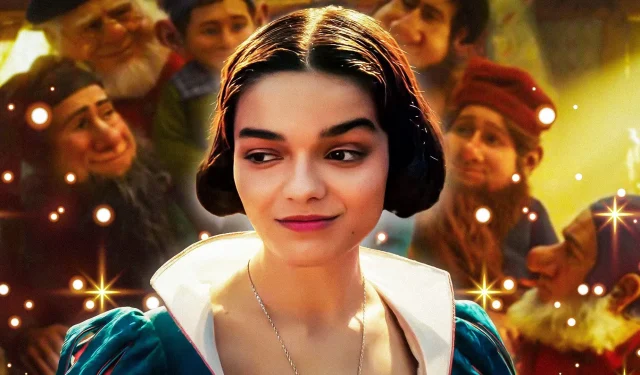Challenges Ahead for Disney’s Live-Action Remakes
Snow White is the latest entry in Disney’s ambitious but contentious series of live-action adaptations of beloved animated classics. Over the past two decades, Disney has demonstrated that these remakes can be successful, as evidenced by films like The Jungle Book (1994) and Cinderella (2015), both of which received impressive Rotten Tomatoes scores of around 80%. However, the recent release of Snow White has highlighted a troubling trend, as it currently sits at a mere 47% on Rotten Tomatoes, with some critics deeming it unwatchable. Additionally, previous live-action adaptations like Pinocchio (2022) and Maleficent: Mistress of Evil (2019) also failed to exceed a 50% critic score, raising concerns about the future of Disney’s classic adaptations. Therefore, as Disney continues to venture into live-action territory, there are several critical factors to consider.
Rotten Tomatoes Scores: A Snapshot of Disney Live-Action Remakes
|
Rotten Tomatoes Critic Scores for Disney Live-Action Remakes |
|
|---|---|
|
Title |
Score |
|
The Jungle Book (1994) |
80% |
|
101 Dalmatians (1996) |
41% |
|
102 Dalmatians (2000) |
31% |
|
Alice in Wonderland (2010) |
51% |
|
The Sorcerer’s Apprentice (2010) |
40% |
|
Maleficent (2014) |
54% |
|
Cinderella (2015) |
83% |
|
The Jungle Book (2016) |
94% |
|
Alice Through the Looking Glass (2016) |
29% |
|
Beauty and the Beast (2017) |
71% |
|
Christopher Robin (2018) |
72% |
|
Dumbo (2019) |
45% |
|
Aladdin (2019) |
57% |
|
The Lion King (2019) |
51% |
|
Maleficent: Mistress of Evil (2019) |
39% |
|
Mulan (2020) |
72% |
|
Cruella (2021) |
75% |
|
Pinocchio (2022) |
27% |
|
Peter Pan & Wendy (2023) |
64% |
|
The Little Mermaid (2023) |
67% |
|
Mufasa: The Lion King (2024) |
57% |
|
Snow White (2025) |
47% |
1. Overreliance on CGI and Its Pitfalls
Case Study: The Dwarfs in Snow White
One significant critique regarding the Snow White remake is its reliance on CGI to portray the seven dwarfs instead of using live actors. Disney aimed to preserve the whimsical nature of these beloved characters, yet the outcome feels disjointed and artificial. This criticism echoes throughout several of Disney’s adaptations that attempted to blend real actors with CGI-generated entities.
In a similar vein, The Little Mermaid (2023) faced scrutiny for its CGI sea creatures, which lacked the organic interaction with human actors. To improve future projects, Disney must address the “uncanny valley”effect that often alienates viewers or reconsider creating adaptations that mix live-action with heavily animated characters.
2. Altering Core Themes Can Backfire
Shifts in Focus: From Love to Ambition
Another challenge facing Snow White lies in the fundamental shift of its narrative focus. In the remake, Snow White’s journey is less about seeking true love and more centered on fulfilling her father’s wishes. While Disney’s intent may be to move away from antiquated stereotypes, this modern twist often feels forced and compromises the story’s integrity.
Contrast this with the better-executed thematic changes in other remakes, such as the addition of depth to Jasmine’s character in Aladdin (2019). This nuanced approach serves as an important lesson for Disney’s narrative strategies in future adaptations.
3. The Importance of Vocal Talent
When Casting Falls Short
Disney’s live-action adaptations frequently suffer from casting decisions that overlook vocal prowess. With most remakes being musicals, the inability of some leading actors to deliver strong vocal performances has led to reliance on extensive audio manipulation. Although Rachel Zegler shines in her role in Snow White, past choices, like casting Emma Watson in Beauty and the Beast (2017), drew criticism for lapsing into excessive editing.
While improvements are evident, with the casting of talent like Halle Bailey in The Little Mermaid, certain supporting roles still lacked vocal quality, showcasing that Disney must prioritize vocal talent as an integral aspect of their casting processes.
4. Justifying the Visual Transformation
Establishing a Visual Legacy
Animation offers a unique canvas for creativity, allowing for limitless imagination. The original Snow White is imbued with enchanting visuals that, unfortunately, some live-action versions fail to replicate. While certain scenes in Snow White showcased artistic beauty, many moments felt mundane compared to their animated counterparts. This trend is echoed in other recent adaptations, like The Little Mermaid, which fell short of capturing the vibrancy of the original film.
Though live-action adaptations should strive for realism, translating an iconic animated masterpiece into a subdued vision does not justify the transition.
5. Finding a Balance in Faithfulness
Innovation vs. Tradition
Striking the right balance between faithfulness and creativity is essential. Disney’s tendency to remain too loyal to the original narratives can be problematic, as seen with Pinocchio (2022), which received criticism for failing to introduce any fresh perspectives. Relying on nostalgia without invoking innovation results in lackluster adaptations that fail to capture audience interest.
6. Preserving the Childlike Wonder
Aiming at the Right Audience
Disney has traditionally crafted films for children, yet some live-action remakes veer too far into darker, more mature themes, alienating younger viewers. The absence of whimsical characters or humor in movies like Mulan creates a disconnection from the source material, detracting from its appeal to children. Snow White’s recent narrative alterations also lean more toward adult themes, which may detract from its original charm.
7. The Challenges of Sequels
Cost vs. Profit in Live-Action Sequels
A telling trend has emerged in Disney’s recent live-action projects: sequels often fail to deliver the same success as their predecessors. The original Maleficent enjoyed a moderate 54% score, yet its sequel plummeted to 39%. The disparity suggests a growing disconnect with audiences. The only recent example of a successful sequel is Mufasa: The Lion King (2024), which stands at 57%—a notable contrast to its 2019 original.
As Disney reflects on these trends, learning from past performances could steer future adaptations in a more promising direction. While Snow White‘s trajectory remains uncertain, there is potential for Disney to improve its live-action storytelling by leveraging insights gained from earlier projects.


